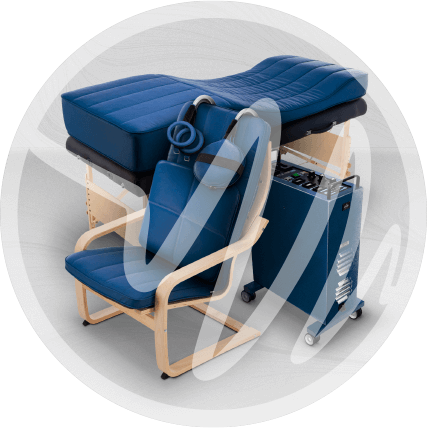Managing Multiple Sclerosis Naturally: How PEMF Therapy May Help with Symptoms, Inflammation, and Quality of Life
Living with Multiple Sclerosis (MS) means navigating a complex and often unpredictable neurological condition. Fatigue, pain, spasticity, and mobility challenges can affect nearly every aspect of daily life. While medications aim to slow progression and reduce relapses, many individuals are turning to noninvasive, drug-free MS treatment support to ease symptoms, support nerve health, and enhance overall well-being.
One promising option is PEMF therapy for multiple sclerosis (Pulsed Electromagnetic Field therapy)—a gentle, science-backed treatment that stimulates the body’s natural repair mechanisms at the cellular level.

What Is Multiple Sclerosis?
Common Symptoms Include:
- Chronic fatigue
- Muscle spasms and stiffness
- Numbness or tingling in limbs
- Difficulty with balance and coordination
- Pain and cognitive changes
How PEMF Therapy Works
PEMF therapy uses pulsed electromagnetic fields to stimulate cellular activity, improve circulation in MS, reduce inflammation, and support nervous system health. These pulses reach deep into tissues and nerves, encouraging healing, ATP production, and better intercellular communication.
For people with MS, this therapy can help address the biological disruptions behind symptoms, offering a path to natural MS symptom relief and improved resilience.

Key Ways PEMF Therapy May Support People with MS
Reduces Inflammation in the Nervous System
Chronic inflammation plays a significant role in MS flare-ups and progression. PEMF therapy for multiple sclerosis helps reduce inflammation in MS by modulating immune activity and oxidative stress, potentially protecting neurons from damage.
Supports Nerve Repair and Communication
PEMF stimulates ATP production and improves ion exchange across cell membranes, which may enhance nerve function naturally. This supports faster signaling and may reduce numbness, improve coordination, and restore balance.
Improves Circulation and Oxygenation
PEMF promotes microvascular circulation, ensuring oxygen and nutrients reach inflamed nerve tissue. This supports detoxification and nerve repair, making it an ideal therapy to improve circulation in MS-affected areas.
Eases Muscle Spasms and Pain
Spasticity and nerve-related pain are common challenges. PEMF for MS-related spasticity may help calm overactive nerves, relax muscle fibers, and improve comfort. Many users report meaningful pain relief after consistent use.
Reduces Fatigue and Boosts Energy
PEMF for MS fatigue enhances mitochondrial function, which increases ATP and combats the chronic exhaustion that affects many people with MS. This is a safe, non-stimulant solution for regaining daily energy.
Promotes Better Sleep and Mental Clarity
Brain fog and poor sleep often accompany MS. PEMF therapy supports healthy brainwave patterns and neurotransmitter regulation, leading to improved rest, more precise focus, and better emotional resilience.
Research and Clinical Evidence
- Reducing neuroinflammation
- Enhancing nerve conduction
- Improving fatigue and mobility
- Supporting overall nerve health

Empower Your Journey with PEMF
A Supportive, Non-Invasive Therapy for MS Management
View Clinical Research on PEMF and Arthritis Relief:
- Study: Modification of Osteoarthritis by Pulsed Electromagnetic Field—A Morphological Study
- Study: The Use of Magnetic Fields in the Treatment of Patients with Rheumatoid Arthritis
- Study: Pulsed Electromagnetic Field Therapy for the Management of Osteoarthritis-Related Pain, Stiffness, and Physical Function: Clinical Experience in the Elderly
- Study: Exposure to a Specific Pulsed Low-Frequency Magnetic Field: A Double-Blind, Placebo-Controlled Study on Pain Reduction in Rheumatoid Arthritis and Fibromyalgia Patients
- Study: Pulsed Electromagnetic Fields in Knee Osteoarthritis: A Double-Blind, Placebo-Controlled, Randomized Clinical Trial
- Study: Effects of Pulsed Electromagnetic Field Therapy on Knee Osteoarthritis: A Systematic Review
